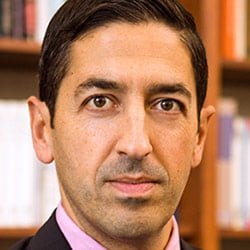IAPHS – Three Steps Towards our Vision
Sandro GaleaI am deeply honored to serve as the inaugural president for the Interdisciplinary Association for Population Health Science (IAPHS). The purpose of IAPHS is to foster scientific innovation and discovery to improve the health of populations and reduce health disparities. It does this by advancing population health science, working to improve population health by promoting the communication and application of such science, and supporting population health scientists in their careers. This, to my mind is a worthwhile mission and set of efforts indeed, and it is with that in mind that I am excited to be a part of this next stage in IAPHS’s evolution. How will we go about achieving our vision?
We build on an extraordinarily solid base, a legacy of the founders of IAPHS to whom we are indebted. The previous Board has left us with an excellent set of objectives, a dynamic website, and a sound organizational framework. Two Robert Wood Johnson Foundation-funded conferences have begun to give vital form to what our mission can mean. Moreover, the over 150 individuals and organizations who have joined IAPHS have created a diverse pool of expertise and support on which we can build.
Over the next year, we will take three steps to keep IAPHS on course towards achieving its vision.
- Build our membership: My goal is to have over 500 IAPHS members by next year. IAPHS needs to have the solid financial base that members bring, but also the engagement and investment of a membership that brings diverse skillsets that will contribute to improved population health. IAPHS welcomes health scientists, social scientists, health care professionals, and public health practitioners. Creating both growth and diversity in membership will be a top priority for the Board.
- Engage our community: IAPHS is committed to communicating the science of population health and to engaging community members whose work is inextricable from the work of population health improvement. Whether it’s creating a vital blog, planning conferences, developing effective outreach strategies, recruiting candidates for next year’s Board positions, or organizing mentoring events, these activities and more provide ways of getting involved with an IAPHS committee and helping us succeed. Please email us if you’d like to be considered for a committee appointment.
- Convene diverse communities: As an interdisciplinary organization committed to translation, IAPHS must bring a wide range of experts, ideas, and approaches into conversation with each other. This on-line Forum, launched today, is one important platform for this. Please get involved by writing or responding to blog posts, or volunteering for the editorial group. See the companion post for more details.
Finally, we will continue to host and grow conferences that aspire to bring together our members and others interested in IAPHS’s vision of nurturing the population health conversation. IAPHS conferences bring scientists from multiple disciplines, practitioners, and policymakers together into conversation around population health issues. IAPHS will expand its conference activities this year with two regional conferences—one in collaboration with members at the University of Washington, and one that I will be hosting at Boston University. In addition, IAPHS will once again collaborate in the RWJF-funded conference scheduled for October 2–4, 2017 in Austin, Texas. Early this year, President-Elect Bruce Link will begin planning for the IAPHS conference to be held in Washington, DC, October 3–5, 2018. Watch the IAPHS website for more information.
By the time you are reading this, the new leadership of IAPHS will have already met to continue the work of building this exciting new organization. I am delighted to be a part of IAPHS’s evolution and look forward to our work together in 2017. Please join me in making IAPHS a formidable force in understanding and improving population health.






All comments will be reviewed and posted if substantive and of general interest to IAPHS readers.